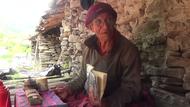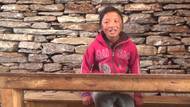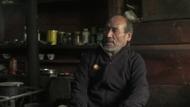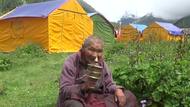Explore Nubri: Reflections on the 2015 Nepal Earthquakes
The purpose of this collection is to feature selected discourses and interviews as provided by members of the Nubri community of Gorkha District, Nepal.
About This Collection
This collection is the result of a National Science Foundation RAPID project (BCS 1547377) to collect, annotate, and make publicly available multi-participant interviews and narratives conducted with survivors of Nepal’s major earthquakes that occurred in April and May 2015. The geo-linguistic focus is communities of Tibeto-Burman language-speaking peoples from three contiguous districts of Nepal’s Western Zone: Mustang, Manang and Gorkha, including local residents and also migrants who are now involved in relief and rebuilding efforts. The research questions are: 1) What do survivors and responders know about, and how can they explain the earthquakes based on their lifelong linguistic, cultural and environmental experiences? 2) How do survivors and responders view their world through these earthquakes and their aftermath, particularly in terms of causality and consequence? This research is important because there is precious little information about the impacts on language demographics and practices in sudden catastrophic events that coincide with great migration movements. Additionally, without an immediate effort to capture and document variation and nuances, the experiences that different people underwent will be influenced and re-shaped by reports gathered from the media and other relief agencies working in Nepal. This study focuses on the relationship between humans and their social and physical environment, providing valuable insider perspectives on why and how they create and maintain their livelihoods in places where extreme environmental conditions are a constant and powerful presence. The interviews and narratives will enable disaster planners and responders to establish best-practice advice, based on local and culturally appropriate ethnographic practice, one that is tailored to the demographic, spatial, medical and cultural needs of different communities. This study will provide ideas, originating from local participants, about how local healers and responders can provide ritual and medical services that will be beneficial to the highland communities, which are an important part of the overall Nepal demography.
The interview tools are adapted versions based on surveys used after other natural disasters (e.g. the Armenian and San Francisco bay area earthquakes in 1988 and 1989, Hurricane Katrina), to make use of questions designed to assess event experience, post-event trauma, and feelings about the future (Armenian et al 1998, Kessler et al 2008, Roach 2008). The variables integrated into the interviews include: location and origin of the survivor or responder, and distance from the quake epicenter; kind of terrain of the village (mountain valley, hills, flat; ridge top, valley floor, slope); social environment (city; town; village; field outpost); structures in place or damaged (traditional, modern), and building materials (wood or stone, on walls or as roofs); responses already in action and kinds of planned responses; local religion(s); local labor force; medical facilities in place; local language practices; feelings about post-quake response by local and non-local agencies and individuals, assessment of future community vitality. The research toolsh have been approved for human subjects and informed consent review at all institutions for which the project members are affiliated.
The narrative process asks individuals to share, in monologue or dialogue form, their experiences, descriptions of their actions and responses, their self-evaluation of the usefulness of their actions, their understanding/perception of why these events took place, their perception of why their local area was impacted in the way that it was, and how they would like to see repair/reconstruction occur, with what agency, and with what stated goals. As with the interviews, topic choices and degree of detail will be controlled by the participants, based on their ability and willingness to share vivid memories and sometimes-controversial opinions.
Background Information on Nubri and (Upper) Gorkha
Nubri is located in the Western hemisphere of Nepal (28.51, 84.78) with approximately 2000 speakers. The ISO-639 code assigned to Nubri is (kte) and the glottocode is (Nubr 1241). The Nubri language derives from Kyerung, and the Kyerung language derives from Gyalsumdo-Nubri-Kyirong. The Nubri language has four dialect languages: Bihi, Prok, Lho, and Sama. These languages are spoken in the Gandaki zone,the Northern Gorkha district, the Upper Buri Gandaki river, and in the Namdung district to Samdo and Prok. In the Northern Gorkha district lies the Nubri Valley comprised of Bihi, Prok, Lho, and the Sama Village. The Sama Village is a developmental committee comprised of Nubri's public schools and health care centers. The population in the Nubri Valley is approximately 9000 people consisting of 850 households. Most of their dependency for living means is based on the agriculture of their crops, their ability to care for the farm animals, and the nearby trade hubs. Most of the people in the valley marry within their community, or in Kutang. The majority of the population’s culture is Buddhist.
Selected References
Childs, Geoff. 2008. Tibetan Transitions: Historical and contemporary perspectives on fertility, family planning, and demographic change (Brill’s Tibetan studies library)
Hildebrandt, Kristine A. and Perry, J. Joseph. 2011. Preliminary notes on Gyalsumdo, an undocumented Tibetan variety in Manang District, Nepal. Himalayan Linguistics Journal 10. 167-185
Nubri. 2016. Glottolog
Audio-Video Items in this collection
The list below includes items from this Collection’s Subcollections.







